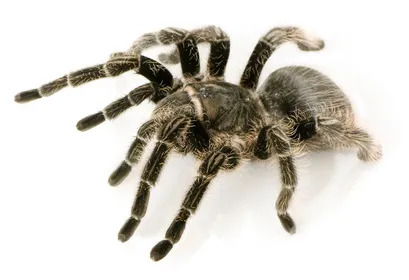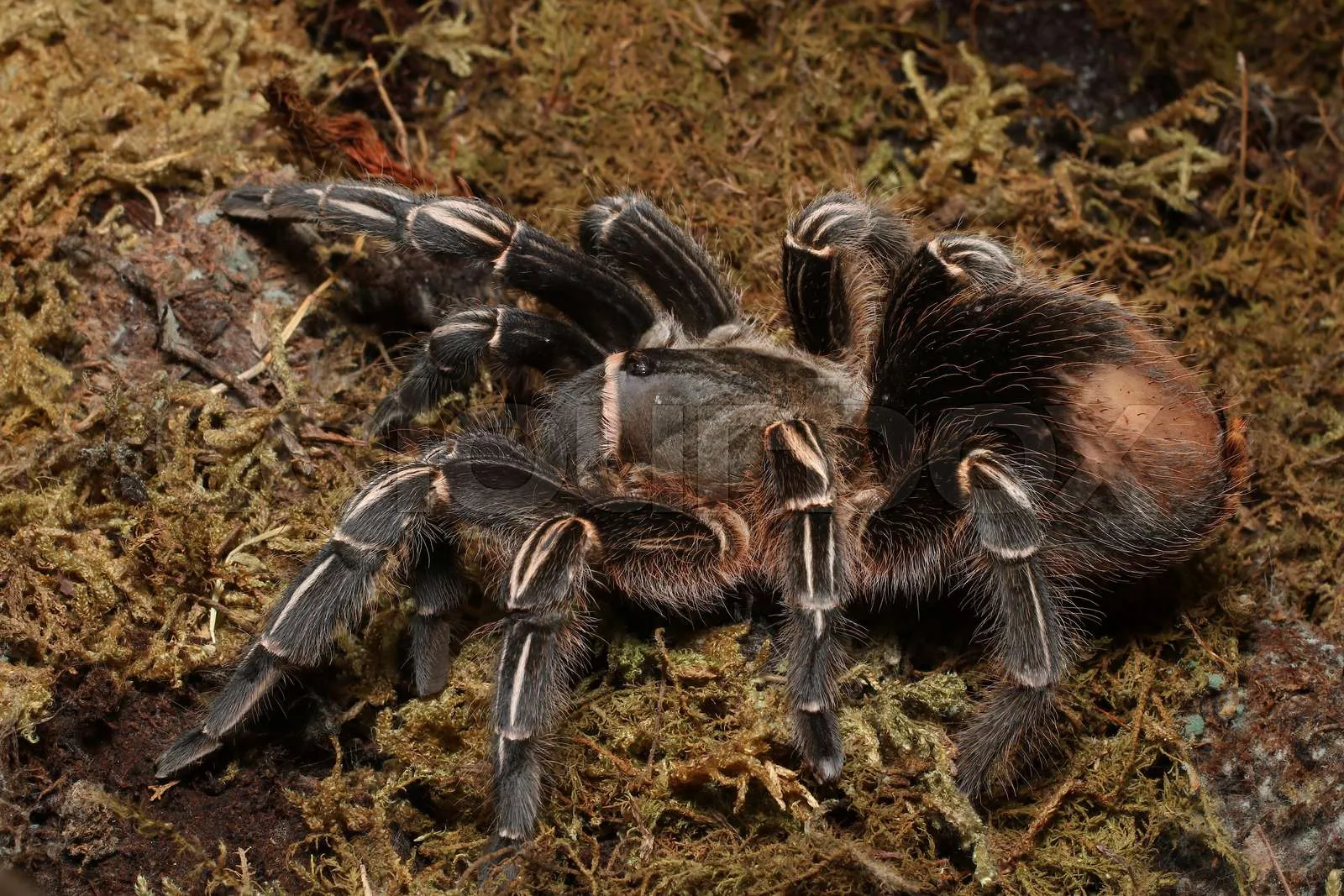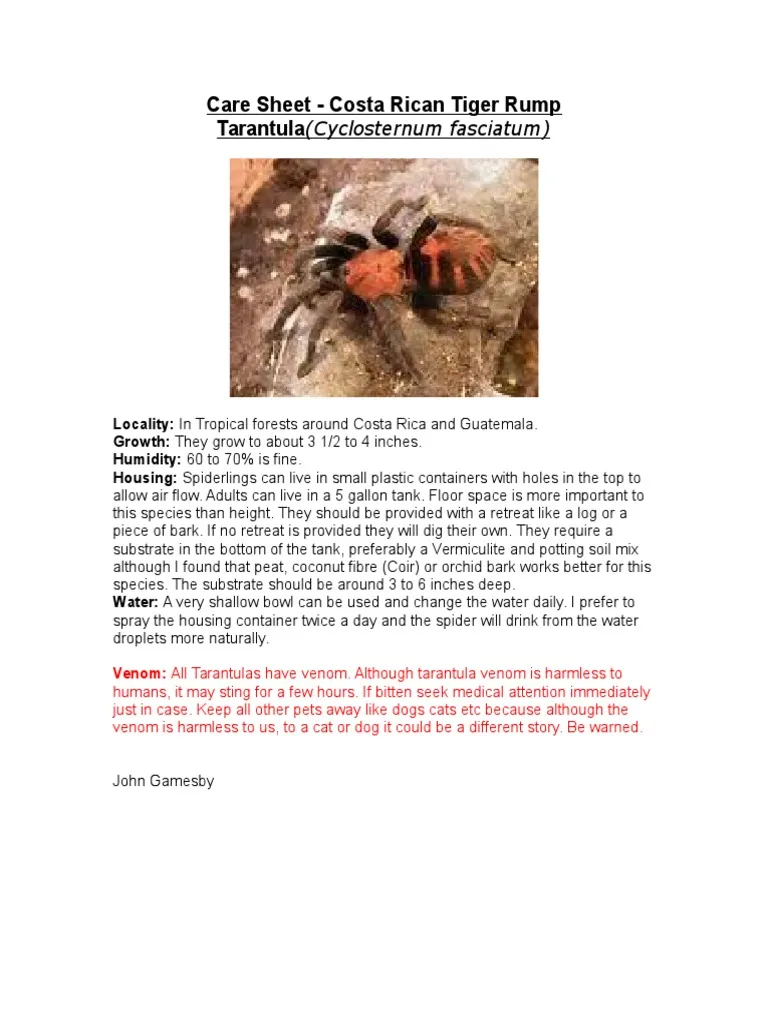The Costa Rican Zebra Tarantula (Aphonopelma seemanni) is a popular choice for tarantula enthusiasts due to its relatively docile nature and striking appearance. These beautiful arachnids, with their distinctive black and white striped legs, are fascinating creatures to observe and care for. Providing the right environment and understanding their needs is crucial to ensuring your Costa Rican Zebra Tarantula thrives. This care sheet will provide you with the top 5 essential tips on how to care for your Costa Rican Zebra Tarantula, covering everything from habitat setup to feeding and health.
Costa Rican Zebra Tarantula: Essential Habitat
Creating a suitable habitat is the foundation of good Costa Rican Zebra Tarantula care. They are terrestrial spiders, meaning they spend most of their time on the ground. Their enclosure should mimic their natural environment, providing a secure and comfortable space. The enclosure is the most important aspect of the tarantulas life, because they spend most of their time inside, so make sure you give them the best environment possible.
Setting Up the Enclosure
Choosing the Right Size

The size of the enclosure depends on the size of your tarantula. A juvenile tarantula can be housed in a small container, but as they grow, they will need more space. A good rule of thumb is to provide an enclosure that is at least three times the tarantula’s leg span in width. For an adult Costa Rican Zebra Tarantula, a 10-gallon tank or a similar-sized enclosure is generally suitable. Ensure the enclosure has a secure lid to prevent escapes, as these tarantulas are quite agile and can climb.
Substrate and Decorations
The substrate is the flooring of your tarantula’s habitat. It serves several purposes, including providing a surface for the tarantula to walk on, helping to maintain humidity, and allowing the tarantula to burrow if it chooses. The ideal substrate for a Costa Rican Zebra Tarantula is a mixture of coconut fiber, peat moss, and a small amount of vermiculite. This mixture holds moisture well, is safe for the tarantula, and allows for burrowing. The substrate should be at least 4-6 inches deep to allow for burrowing. Add a few decorations, such as cork bark, fake plants, or sturdy hides, to provide hiding places and enrich the environment. These are important for the tarantula’s well-being and provide a sense of security.
Temperature and Humidity
Maintaining the Right Climate

Costa Rican Zebra Tarantulas thrive in a specific temperature and humidity range. Maintaining the correct climate is critical to their health and well-being. The ideal temperature range is between 75-85°F (24-29°C). You can use a heat mat placed on the side of the enclosure to maintain this temperature, but ensure the tarantula cannot directly access the heat source to prevent burns. The humidity level should be maintained between 60-70%. This can be achieved by misting the enclosure with a spray bottle a few times a week or by providing a water dish.
Monitoring with Thermometers and Hygrometers
Regular monitoring of the temperature and humidity levels is essential. Use a thermometer and a hygrometer to track these parameters. Place the thermometer and hygrometer inside the enclosure where you can easily read them. This allows you to make necessary adjustments to the heating and humidity levels. Adjustments might include increasing the frequency of misting or adjusting the location of the heat mat. Accurate monitoring prevents issues like dehydration or respiratory problems that can arise from incorrect climate conditions.
Costa Rican Zebra Tarantula: Feeding and Hydration
Proper nutrition and hydration are fundamental to the health of your Costa Rican Zebra Tarantula. These tarantulas are opportunistic predators and require a balanced diet to thrive. Additionally, fresh water is essential for their survival. Providing appropriate food and water ensures your tarantula remains healthy and active.
What to Feed Your Tarantula

Costa Rican Zebra Tarantulas primarily eat insects. Suitable food items include crickets, mealworms, dubia roaches, and other commercially available feeder insects. The size of the prey should be appropriate for the size of the tarantula. Generally, the prey should be no larger than the tarantula’s body length. It is also important to gut-load the insects before feeding them to your tarantula. Gut-loading involves feeding the insects nutritious food, such as vegetables and fruits, a day or two before offering them to your tarantula. This ensures the tarantula receives essential vitamins and minerals.
Feeding Frequency and Amounts
Feeding frequency depends on the tarantula’s age and size. Spiderlings (young tarantulas) should be fed more frequently, around twice a week. Sub-adults can be fed once a week, and adults can be fed every one to two weeks. The amount of food offered should be appropriate for the tarantula’s size. Remove any uneaten prey within 24 hours to prevent stress on the tarantula and maintain the cleanliness of the enclosure. Overfeeding can lead to obesity, so it’s crucial to monitor your tarantula’s condition and adjust feeding frequency accordingly. A healthy tarantula will have a slightly rounded abdomen.
Providing Water
Water Dish Maintenance

Always provide a shallow water dish with fresh, clean water. This is essential for hydration. The water dish should be shallow enough to prevent the tarantula from drowning. Use a small, stable dish, such as a bottle cap or a commercially available water dish specifically designed for reptiles or arachnids. Change the water in the dish at least once or twice a week to prevent the growth of bacteria and maintain hygiene.
Misting and Humidity
In addition to the water dish, mist the enclosure with a spray bottle a few times a week to maintain the desired humidity level. Misting the enclosure also provides the tarantula with an opportunity to drink. Avoid over-misting, as this can lead to mold growth. Monitor the humidity levels with a hygrometer to ensure the environment remains within the optimal range. Proper hydration is essential for moulting and overall health.
Costa Rican Zebra Tarantula: Handling and Safety
While Costa Rican Zebra Tarantulas are generally docile, it’s essential to handle them with caution and understand their behavior. Tarantulas are not cuddly pets and should be handled as little as possible to avoid stress. Safety is a priority, both for you and the tarantula. Handling should always be approached with respect and care.
Understanding Tarantula Behavior

Observe your tarantula’s behavior before attempting to handle it. If the tarantula appears agitated, flicks its legs, or raises its front legs in a defensive posture, it is best to leave it alone. Understanding their body language is crucial. Tarantulas can be unpredictable, and even a docile one may bite if startled or threatened. Be patient and build trust with your tarantula. If you must handle your tarantula, do so slowly and gently, and avoid sudden movements. Tarantulas are sensitive to vibrations, so avoid tapping on the enclosure or making loud noises near them.
Handling Precautions
If you decide to handle your Costa Rican Zebra Tarantula, do so over a soft surface, such as a bed or a carpet, in case it falls. Avoid handling it when it is about to molt, as they are more vulnerable during this period. Always wash your hands thoroughly before and after handling the tarantula. Avoid using scented soaps or lotions, as these can be harmful. Handle the tarantula with confidence, but be gentle and always support its body. Remember that tarantulas can be fragile.
Avoiding Bites and Injury
While Costa Rican Zebra Tarantulas rarely bite, it is still possible. Bites are not usually medically significant but can be painful. If bitten, wash the area thoroughly with soap and water. Avoid provoking the tarantula, and do not make sudden movements that could startle it. If you have any concerns or if the bite is severe, seek medical attention. Be careful not to drop the tarantula, as this could lead to serious injury or death. Handle it in a safe environment where a fall won’t cause harm.
Costa Rican Zebra Tarantula: Common Health Issues

Like any pet, Costa Rican Zebra Tarantulas can experience health issues. Recognizing potential problems early on is critical for their well-being. Regular observation and understanding common issues can help you provide the best possible care.
Identifying Potential Problems
Observe your tarantula regularly for signs of illness. These include loss of appetite, lethargy, unusual behavior, or physical abnormalities. A healthy tarantula should be active and alert, especially at night. Watch for any signs of mites, which can be seen as small, moving spots on the tarantula or in its enclosure. Look for changes in the tarantula’s appearance, such as discoloration, or any signs of injury. Any unusual behavior or physical changes should be investigated immediately.
Moulting and Its Significance
Moulting is a natural process where tarantulas shed their exoskeleton to grow. It is essential for their growth and development. Before moulting, the tarantula may stop eating, become less active, and spend more time in hiding. It may also appear dull in color. Do not disturb the tarantula during the moulting process. Provide a humid environment, but avoid direct misting. Once the tarantula has moulted, it will be very vulnerable, and its fangs will be soft. It’s important to give it time to harden before offering food, usually a week or so. The moulted exoskeleton should be left in the enclosure until the tarantula is ready to eat again.
Recognizing and Addressing Illnesses
If you suspect your tarantula is ill, it’s important to identify the problem and take appropriate action. Some common issues include mites, fungal infections, and injuries. Mites can be treated by removing the tarantula from the enclosure and thoroughly cleaning and disinfecting the habitat. Fungal infections can be treated with antifungal medications. For any injuries, provide a clean environment and monitor the tarantula. If the problem persists or worsens, seek advice from a veterinarian experienced with arachnids. It is always better to be safe than sorry when it comes to your tarantula’s health.
Costa Rican Zebra Tarantula: Ongoing Care
Ongoing care is critical to ensuring the long-term health and happiness of your Costa Rican Zebra Tarantula. This includes regular cleaning, maintenance, and knowing when to seek expert advice. These practices help maintain a healthy and stimulating environment for your pet.
Cleaning and Maintenance
Regular cleaning of the enclosure is necessary to prevent the buildup of waste and maintain hygiene. Remove any uneaten food, dead insects, and fecal matter regularly, ideally once or twice a week. Spot clean the substrate as needed, and replace the entire substrate every six to twelve months, or when it becomes heavily soiled. Clean the water dish regularly with warm water and mild soap, and rinse thoroughly. Keeping the enclosure clean helps prevent the growth of bacteria and fungi, which can harm your tarantula.
Regular Enclosure Checks
Perform regular checks of the enclosure to ensure everything is in good working order. Make sure the lid is secure, the temperature and humidity levels are within the correct range, and that the substrate is in good condition. Check for any signs of illness, injury, or pests. Ensure the water dish is filled and that the tarantula has access to fresh water. By performing these checks, you can identify any potential problems early on and take steps to correct them.
When to Seek Expert Advice
If you encounter any problems that you cannot resolve, do not hesitate to seek expert advice. Consult a veterinarian experienced with arachnids or an experienced tarantula keeper. They can provide guidance and help diagnose any health issues or problems with your tarantula. Also, if your tarantula displays unusual behavior, such as loss of appetite or lethargy, it is best to seek professional help. Early intervention is crucial in ensuring the health and well-being of your pet tarantula. It’s always better to get a second opinion when you are unsure about something.
By following these top 5 tips, you can provide excellent care for your Costa Rican Zebra Tarantula and enjoy the rewarding experience of owning one of these fascinating creatures. Remember that proper care is a journey, and continued learning and observation are key to success. With dedication, you can create a thriving environment where your tarantula can live a long, healthy, and happy life.
